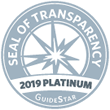The study patients were divided in two groups: non-LT4 and LT4, based on whether they started to take LT4 after the thyroid surgery, with the LT4 group being further divided in four subgroups based on the LT4 dose. The study evaluated the development of SPCs in the non-LT4 versus LT4 groups, and also in different LT4 dose subgroups after the thyroid cancer treatment. The analysis was adjusted for multiple factors, including the total dose of RAI treatment, type of thyroid surgery, patient adherence to LT4, obesity, smoking and alcohol consumption.
Over an average follow-up of 7 years, 849 (6.3 per 1000 person-year) SPCs were diagnosed in the non-LT4 group and 16,561 (6.9 per 1000 person-year) SPCs were diagnosed in the LT4 group. The risk of colorectal, liver, and biliary tract cancer was higher in the LT4 group compared to the non-LT4 group, after adjustment for age, gender and total dose of RAI treatment. In the LT4 group, the risk of all SPCs increased with increasing LT4 dose. There was a gradual increase in the risk of digestive system cancers with the increase in the LT4 dose, with a significant risk noted in the high-dose LT4 groups. In addition to the digestive system cancers, the risks of most cancers, including head and neck, lung, breast, female genital system, brain, and hematologic cancers increased in the high-dose LT4 groups as compared to the lowest LT4 dose group.
WHAT ARE THE IMPLICATIONS OF THIS STUDY?
The study showed for the first time that high dose LT4 treatment was associated with an increased risk of second primary cancers in thyroid cancer patients, independent of the RAI treatment. While thyroid hormone suppression therapy is important in prevention of thyroid cancer recurrence, its long-term use, particularly at high doses, may increase the risk of developing these SPCs, especially digestive cancers. Additional research is needed to find the best LT4 dosage to balance benefits and possible risks of thyroid hormone treatment in thyroid cancer patients.
— Alina Gavrila, MD, MMSC



